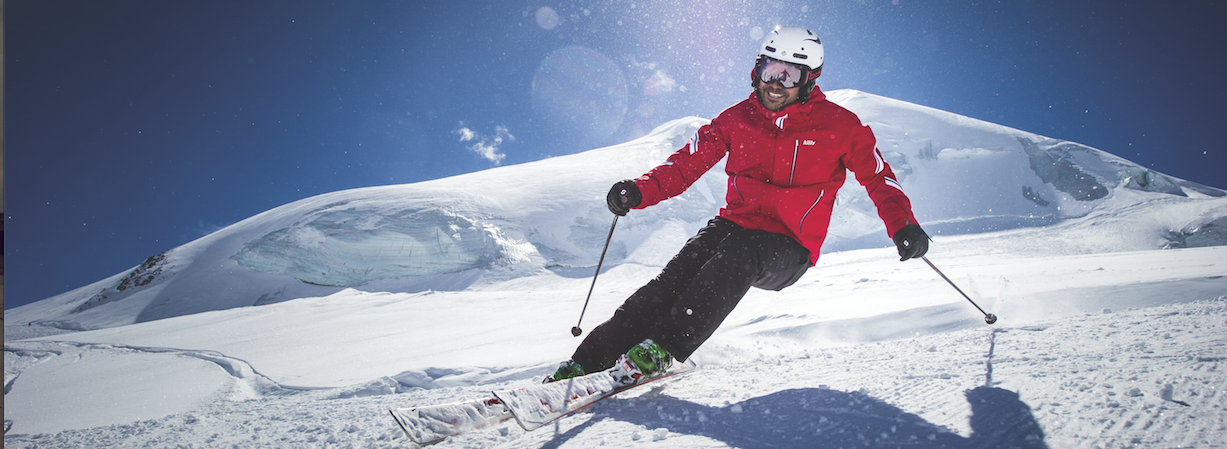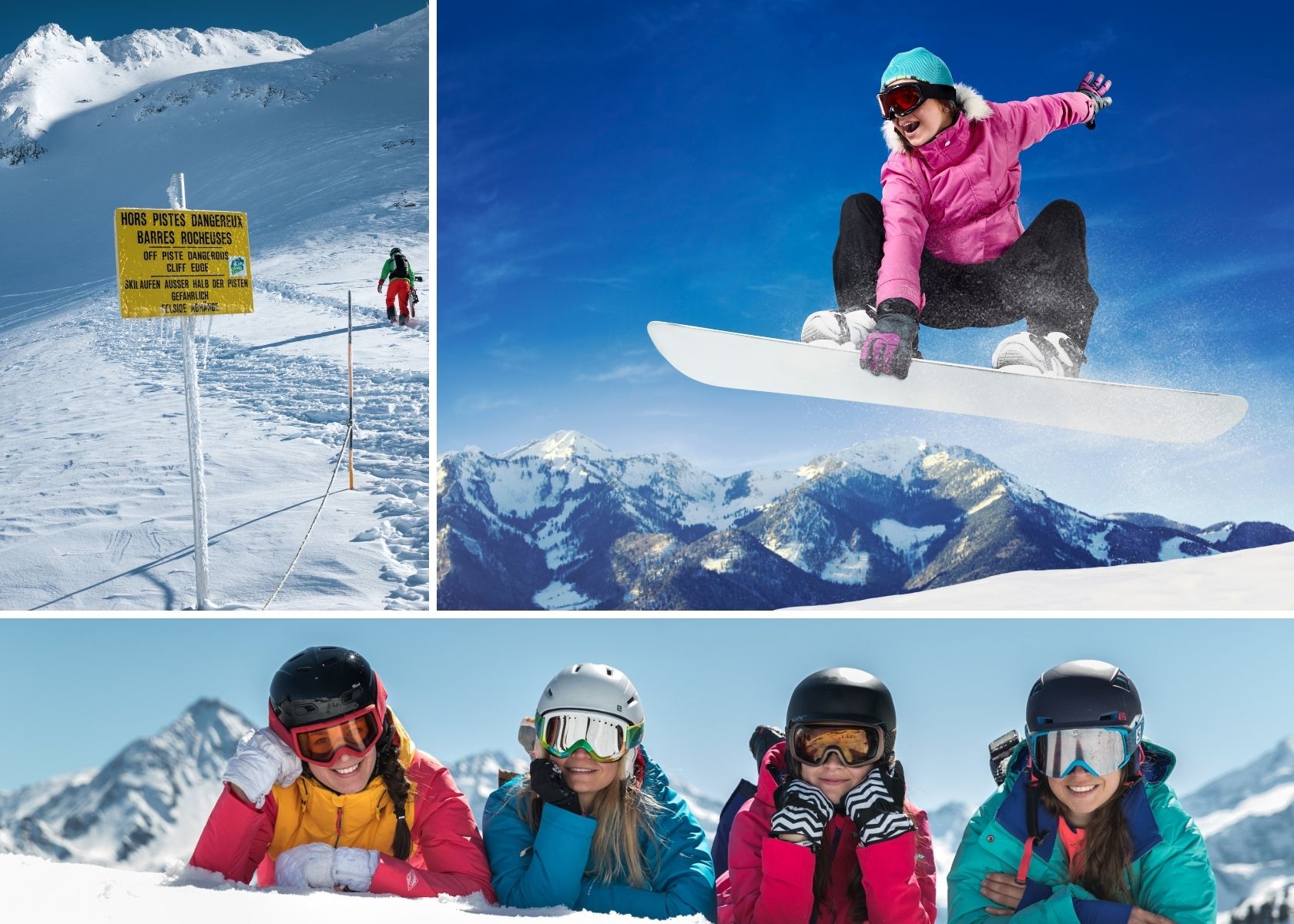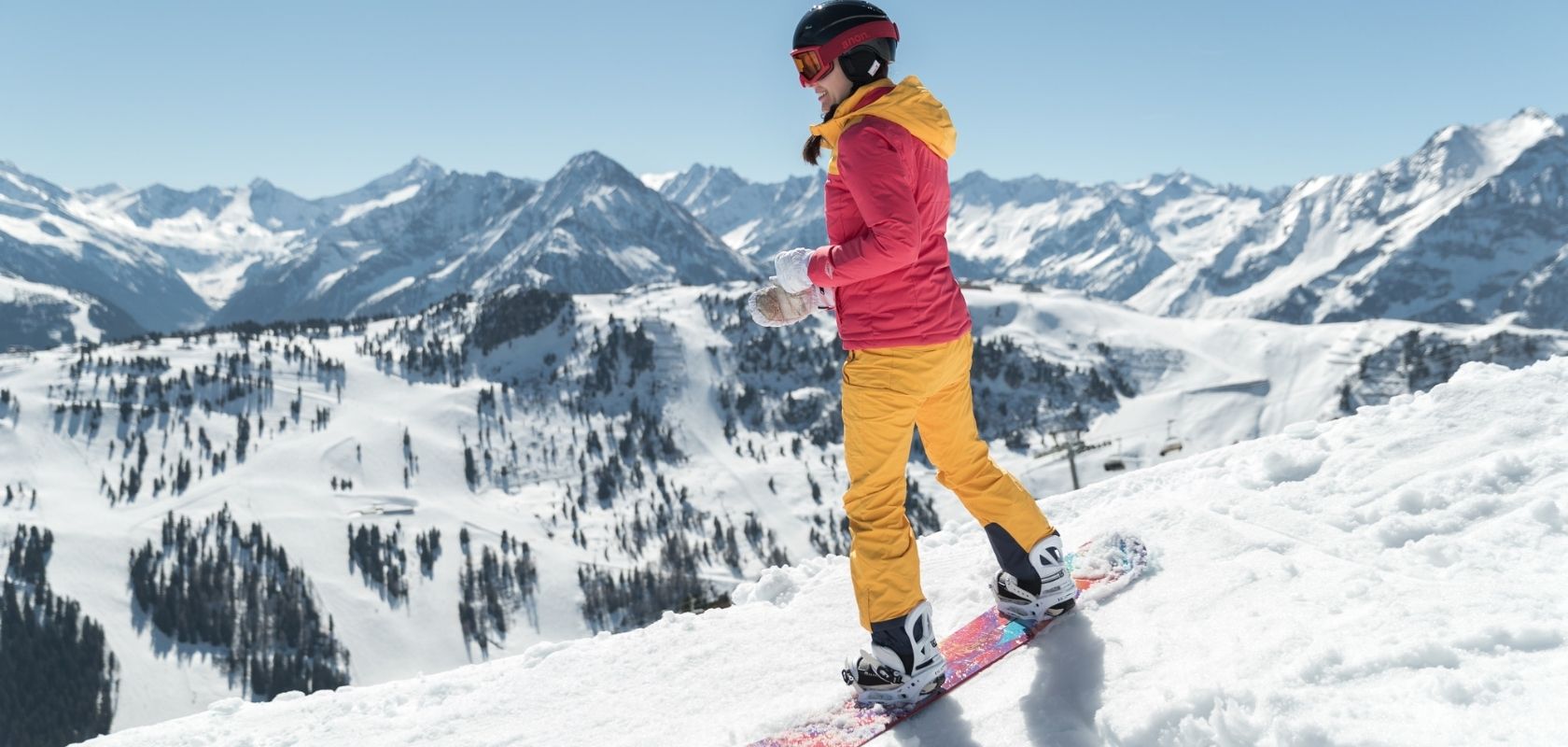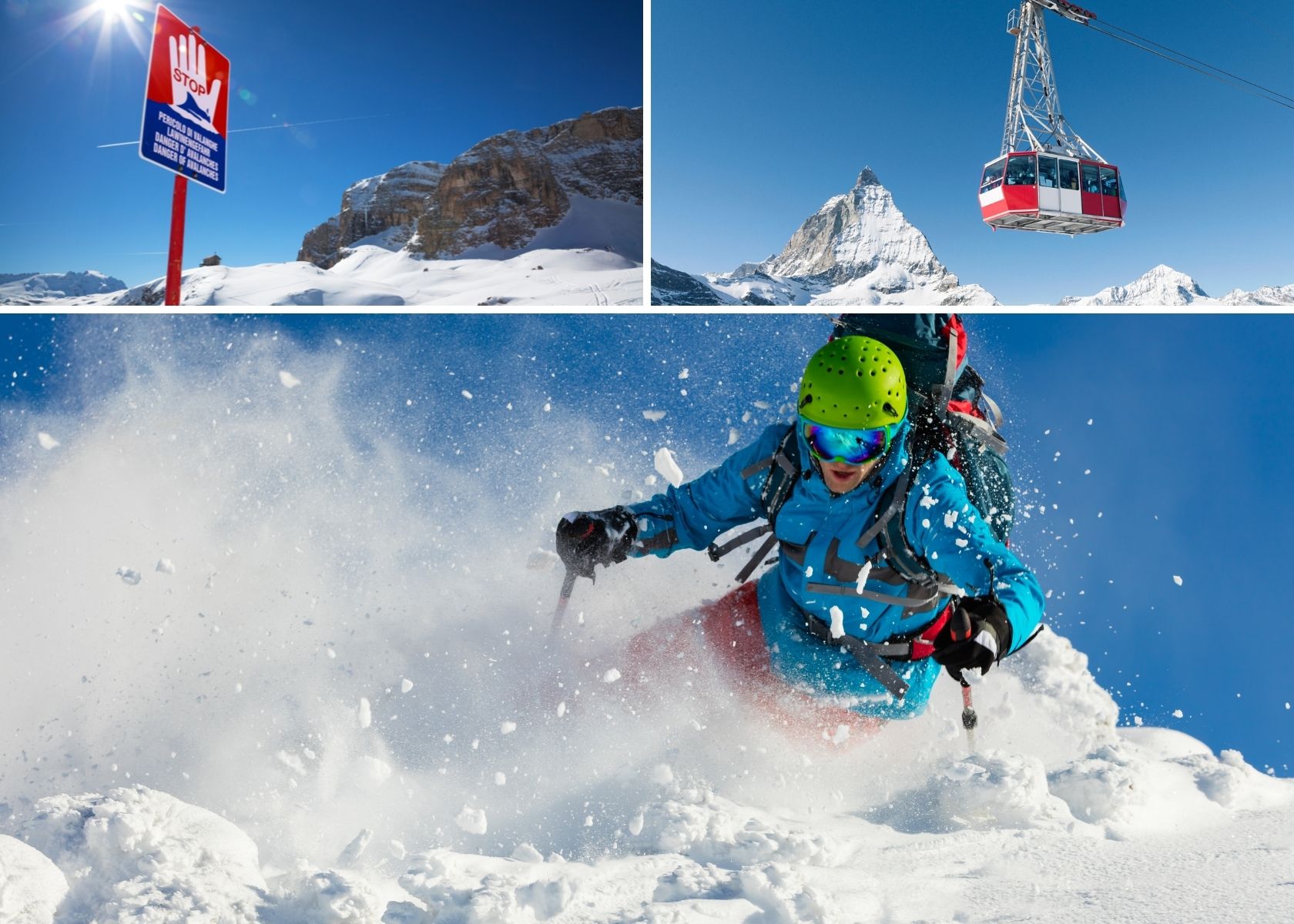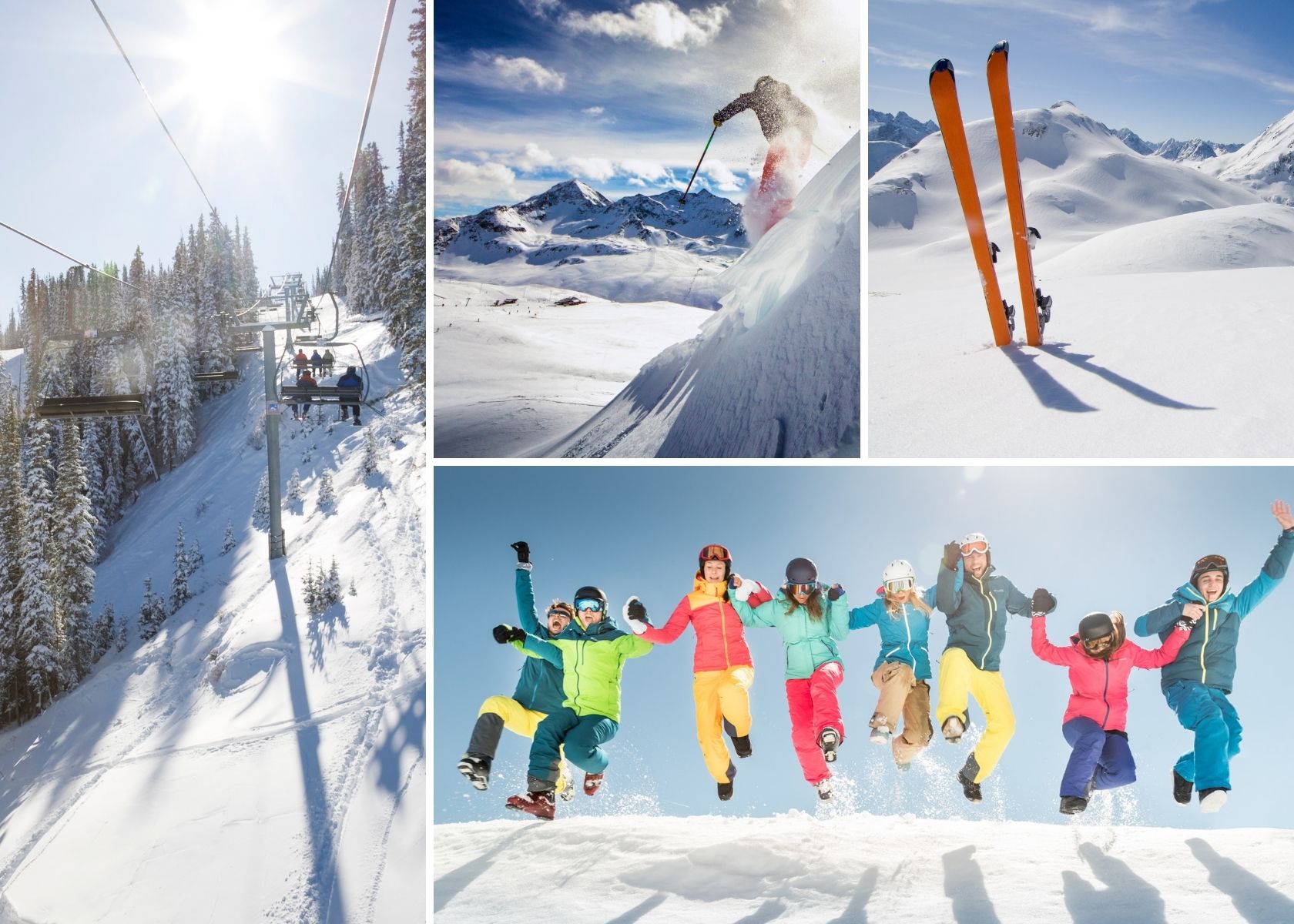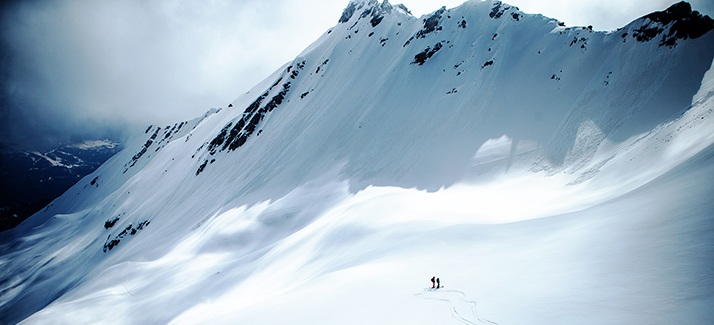STAYING SAFE ON THE SLOPES
If you live for seeking freshly fallen snow or spend the year waiting to hit the slopes, no doubt the start of the season is the highlight of your year. But in your eager anticipation to get to the mountains, it can be easy to forget some of the basics you need to stay safe and make the most of your trip.
So to make this season’s trip is your best yet, we’ve caught up with fellow snow lovers SnowTrex to get the lowdown on staying safe on the slopes.
Check Your Gear
Your path to staying safe on the slopes starts before you even leave for your resort, as you need to check your gear and make sure you’ve got everything you need to hit the powder.
Helmet
Your helmet is undoubtedly the most important part of your equipment when it comes to safety. You should make sure it follows the EU standard (CEN 1077) and fits you correctly - when you shake your head, the helmet shouldn’t move, but it shouldn’t be so tight that it’s uncomfortable.
Like everything, your helmet has a lifespan, and over time the materials in it degrade, reducing its protection, which is why you should replace it around every five years even if you don’t use it frequently. If you have an accident and there is visible damage to it, you should replace it immediately.
To keep your helmet in the best condition, make sure you take care of it properly. Always place your helmet carefully and avoid chucking it down. During the day, avoid putting your helmet on the floor of the ski lift where it can get bashed about, and at the end of the day, hang it up to keep it safely out of the way.
Goggles
Goggles protect your eyes from damaging UV radiation and reduce glare from the sun and snow to give you a clearer view of your run and reduce your chances of colliding with other skiers.
Glare protection in goggles is categorised on a scale of 0 to 4. For alpine snow sports, level 3 is recommended, while level 4 is necessary for the stronger solar radiation that you’re exposed to on a glacier. Look out for polarised goggles for extra glare protection or photochromic goggles, which adjust to the light conditions.
Sunscreen
Sunscreen is a must in the extreme sunlight that you are exposed to at high altitudes. Choose factor 30 or higher to get the best protection, and consider using a lip balm with SPF to protect the sensitive skin on your lips.
Clothing
Choosing the right clothing will help keep you comfortable on the mountains, so you can ski at your best. You don’t need to buy loads as a simple three-layer principle will keep you warm and dry all day long. Start with a base layer, add a fleece or insulated jacket for warmth, and finally add a windproof, water-resistant and breathable outer layer. Then you just need to remember your extremities and pack some quality ski socks and gloves to keep your hands and feet warm and dry too!
Back + Wrist Protectors
Popular with off-piste and freestyle skiers, back protectors provide extra protection for your spine if you fall. Choose one that complies with the European CE EN 1621-2 standard, fits you well and has ventilation to keep you from getting uncomfortable.
For snowboarders, wrist protectors are a must-have, providing vital protection to your wrists.
Packs
Getting your backpack right is essential, as carrying a pack that’s too big for you can interfere with your mobility and balance – never a good thing when you’re hurtling down a mountain. Plus, large backpacks can be a hassle on some lifts, leaving you unable to close the safety bar properly.
We recommend sticking to a pack no bigger than 20 litres – it’ll give you plenty of room to carry your essentials without getting in the way of your skiing.
Ski Boots
If you’re investing in some ski boots for your trip, then let the experts help. Getting your ski boots correctly fitted ensures you find the best fit for your feet and how you like to ski. The right size is not just a question of comfort, as the fit of your boots can affect your performance, so taking the time to get fitted is well worth it.
Skis
There are loads of options when it comes to choosing skis which is why we recommend visiting your local Snow+Rock store for expert advice. Our experts will find out about how, where and how often you ski to match you with your perfect pair and adjust your bindings to fit your weight and skiing style.
Ski Service
If you already have your own ski gear, then you’ll need to get it serviced before the start of the season to make sure it’s in the best condition. By keeping your ski and snowboard edges sharp and the bases properly waxed you’ll be able to grip, turn and slide on the snow more easily, and the more manoeuverability on the slopes you have the safer you’ll stay.
Don’t forget your boots either. If you don’t take care of your ski boots the plastic can become deformed or bent which can compromise the structural integrity. Deformation can affect overall fit which can compromise your skiing ability and can result in your ski boots breaking which could put you at risk on the slopes.
Fortunately, at Snow+Rock stores, we can carry out services and repairs on skis, snowboards and boots so can help you get ready to hit the slopes safely.
The Ten Commandments of Skiing and Snowboarding
Once you’ve got your kit together, it’s time to focus on actually skiing safely, and the best way to do that is by following the Fédération Internationale de Ski (FIS) rules of conduct. These "ten commandments" of skiing and snowboarding are the ski area equivalent of traffic rules and are valid worldwide, so familiarising yourself with them will help keep you safer on your next skiing trip:
1. Show consideration
This one goes without saying – behave in a way that puts no one else in danger or hinders their skiing.
2. Control your speed
On the slopes, you’re responsible for keeping your speed under control. When deciding how fast to ski, take into account the terrain, slope conditions, snowfall, and how many fellow skiers are on the slope and adapt your speed accordingly.
3. Respect rights of way
Skiers and snowboarders in front of you have the right of way, which means anyone coming from behind must choose their route accordingly and avoid putting skiers in front in danger.
4. Overtake with care
Overtaking is allowed from all directions, but only if the skier or snowboarder you are overtaking doesn’t get impeded or is limited in their skiing.
5. Follow the rules of entering, stopping and starting on-piste
When you’re entering a new piste, starting after a stop, or moving upwards on the piste, you must make sure that your movement doesn’t pose a risk to either you or anyone else on the piste.
6. Understand prohibited stopping
You’re prohibited from stopping in a blind or narrow spot on the piste unless in an emergency. If you fall in such an area, you must move away as fast as possible to ensure you don’t put yourself or others on the piste in danger.
7. Follow the rules for moving up and down the piste on foot
To move up and down the piste on foot, you must do so along the edge of the piste.
8. Respect piste signs
Piste markings and signs must be respected at all times. Make sure you’re familiar with the most common markings, and if you’re not sure what something means, ask someone.
9. Provide assistance
In the event of an accident, every skier or snowboarder is obliged to help, so you should be ready to assist.
10. Carry your ID
In the event of an accident, you’re required to produce ID whether you’ve been involved or are just a witness, so it’s a good idea to get used to carrying as a matter of course. Choose a secure pocket that you won’t be going in and out of all day.
Five Do's and Don'ts in the Ski Area
Once you’ve got to grips with the basic rules set out by the FIS, it’s time to think about how you can put them into action. SnowTrex have put together some dos and don’ts to help you get started:
DO'S
- Know the limit of your skills and ski accordingly
- Take breaks at regular intervals, and end the ski day when you start feeling tired
- Keep energy levels up, by eating and drinking throughout the day -opt for easily digestible food as it relieves strain on your body at high altitudes
- Follow the rules for the lifts and pay attention to opening times
- Take avalanche warnings seriously, and follow any instructions
DON'TS
- Be tempted to ski at speeds that you can’t control
- Ski aggressively
- Combine skiing and alcohol – it leads to poor judgement, slows your reactions and has a stronger impact when consumed at high altitudes. Après ski should be done after skiing!
- Continue skiing when you start feeling tired
- Ski on pistes that are closed for maintenance - piste machines working with rope winches pose a high risk of injury, so never be tempted to ski a closed route
- Leave the marked piste at warning level 3 or above
In the Event of an Accident
Skiing is a thrill-seekers sport, but that means it comes with inherent risks, and even if you follow all of the rules and advice, accidents can happen. The FIS rules state that you are obliged to assist in the event of an accident, so now is the time to brush up on procedure:
- The first thing you need to do is to stay calm and to secure the accident area.
- Once the area is safe, you should assess the injured person and try to keep them warm
- If there’s someone with you, get them to call the SOS emergency number 112 to inform rescue services about the situation – if you’re on your own, you’ll have to do this after making an initial assessment of the injured person. Alternative numbers include 1414 for Switzerland, 140 for Austria and 118 for Italy.
- Give the operator the following information: your identity, what happened, the number of people injured, the time of the accident, the exact location of the accident and weather conditions at the accident area.
- Once help has arrived, exchange IDs and contact information in case you need to be contacted later on and make sure you keep your phone handy in case you are needed.
Avalanche Awareness
If you’re planning to seek out epic runs in the backcountry this season, then you should consider taking an avalanche safety training course. Avalanches are common once you leave the groomed pistes behind, but with some basic understanding of snow types and how weather affects the snowpack, many can be prevented.
If you plan on heading into the backcountry, you also need to make sure you have all the necessary avalanche gear with you should the worst happen.
Staying Safe on the Slopes FAQs
Always ski in control, adapt your speed to your ability and slope conditions, and respect other skiers’ right of way. Avoid stopping in narrow or blind spots, follow all posted signs, and yield to those downhill from you. Staying alert and courteous helps prevent accidents and ensures a safer experience for everyone.
A helmet significantly reduces the risk of serious head injuries in the event of a fall or collision. Make sure your helmet fits properly and meets safety standards. Replace it after any impact or every five years to maintain protection. Helmets are now standard and often mandatory at many ski resorts.
Warm up before hitting the slopes, choose trails that match your skill level, and don’t push yourself too hard. Stay hydrated, take breaks, and listen to your body. Properly adjusted bindings and well-maintained equipment are crucial for injury prevention. Consider taking lessons if you’re a beginner or returning after a break.
Essential safety gear includes a helmet, goggles, and gloves. Beginners may benefit from knee, elbow, and wrist pads, while advanced skiers might use back protectors. For off-piste skiing, carry avalanche safety equipment: transceiver, probe, and shovel. Always check your gear before each outing for optimal protection.
Secure the area to prevent further accidents, check the injured person’s condition, and call for help immediately. Assist as needed and provide your contact information to emergency responders. All slope users are expected to help in emergencies and cooperate with rescue teams.
Related Articles

Let us know you agree to cookies
We use marketing, analytical and functional cookies as well as similar technologies to give you the best experience. Third parties, including social media platforms, often place tracking cookies on our site to show you personalised adverts outside of our website.
We store your cookie preferences for two years and you can edit your preferences via ‘manage cookies’ or through the cookie policy at the bottom of every page. For more information, please see our cookie policy.

